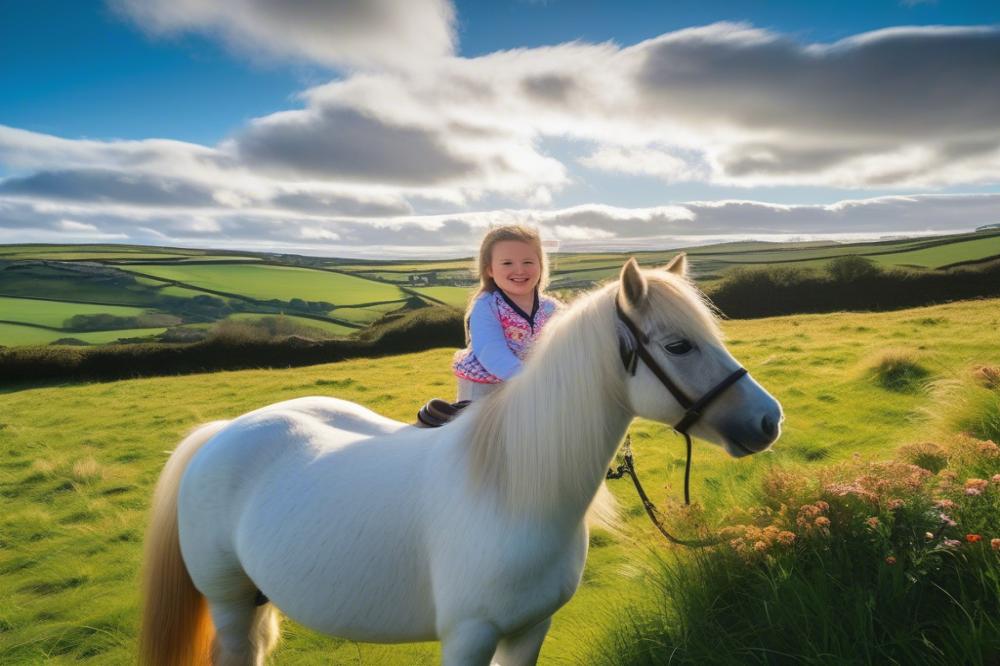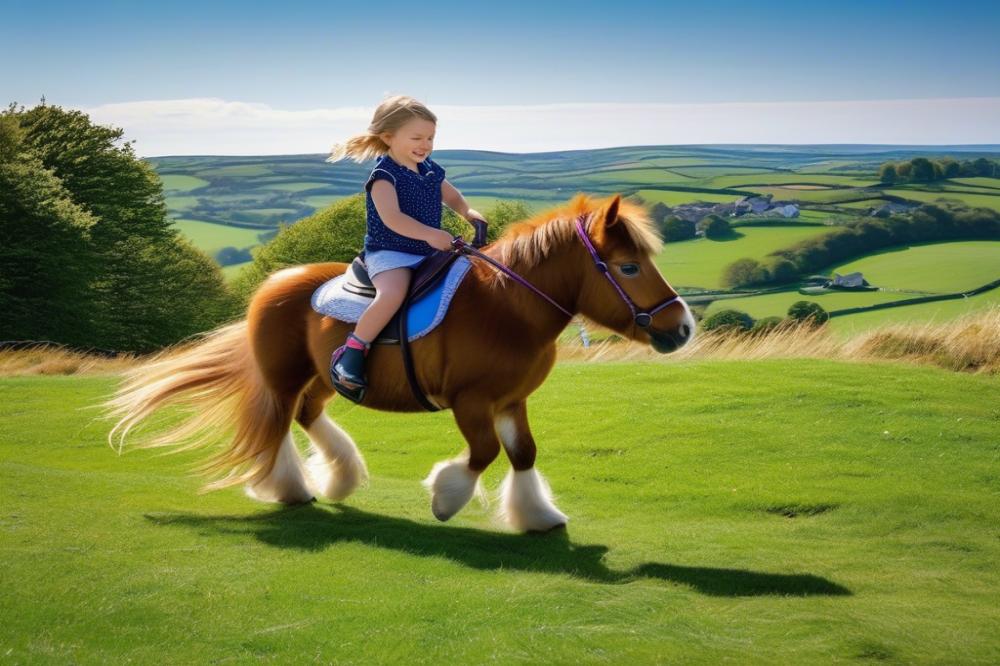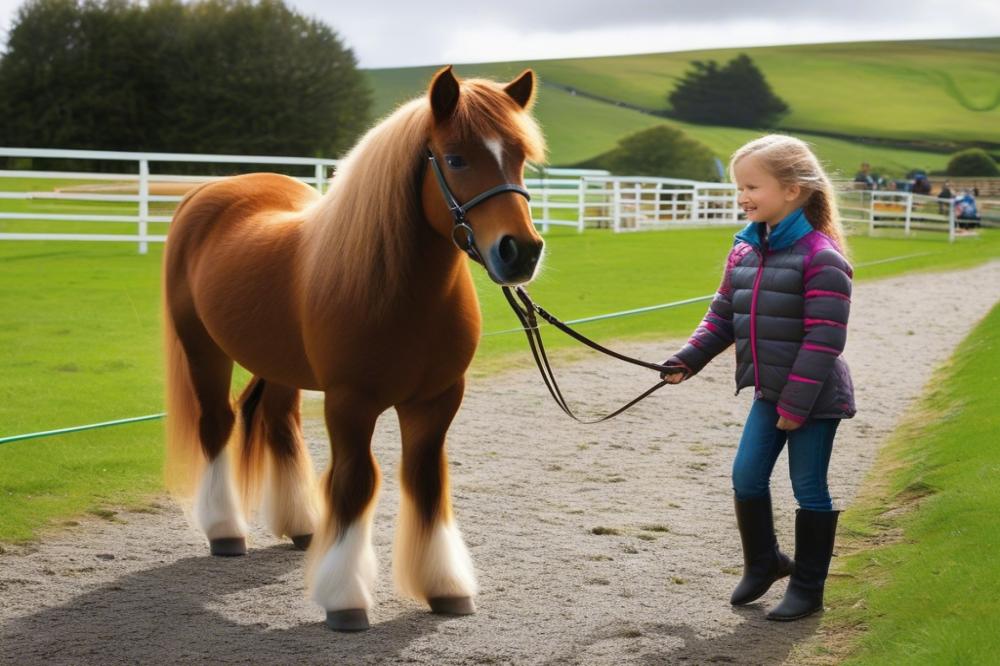Introduction
Shetland Pony Riding offers a wonderful way for beginners to connect with animals while learning important skills. Discovering the world of ponies can be both enjoyable and beneficial for individuals of all ages. Riding these small, gentle creatures can help children and adults build confidence, improve balance, and develop a sense of responsibility.
Engaging with ponies teaches valuable life lessons. For children, it can spark a love for horses and the outdoors. Meanwhile, adults can find a rewarding pastime that promotes physical activity and stress relief. These experiences contribute to personal growth and well-being.
This article aims to guide you through the process of teaching beginners the joys of riding Shetland ponies. Each section will cover essential elements needed for effective instruction. We want to help you foster Beginner Equestrian Skills in a safe and enjoyable manner. By focusing on clear steps and practical tips, we hope to inspire both new riders and their instructors.
Understanding the Shetland Pony

Characteristics of Shetland Ponies
Shetland ponies are small, sturdy animals that typically stand around 28 to 46 inches tall. Their muscular build and thick coat make them well-suited for colder climates. Various colors and patterns can be found, such as black, bay, chestnut, and pinto. Known for their long manes and tails, these ponies possess a charming appearance. They often have a gentle demeanor, making them appealing to new riders.
Why They Are Considered Kid-Friendly Ponies
These ponies have a reputation for being especially kid-friendly. Their size is one reason; younger riders can easily manage them. Additionally, they often exhibit a calm disposition, which helps children feel more at ease. Shetland ponies exhibit natural patience and curiosity, creating a bond that supports beginner riders. Those traits contribute to their effectiveness as teaching partners for youngsters.
Understanding Equine Behavior in Shetland Ponies
Understanding how Shetland ponies behave is crucial for teaching beginners. Horses are naturally prey animals. Their instincts may lead them to be cautious in new situations. Noticing signs of nervousness or discomfort, like tail swishing or ears pinned back, can indicate their feelings. Gradually introducing new experiences, such as different environments or obstacles, helps them adjust. Regular interaction and consistent training will build a trusting relationship.
Learning to read equine body language can enhance rider safety. Shetland ponies often express emotions through their movements. Happy ponies might prance or nuzzle affectionately. Conversely, a pony that feels threatened may try to move away or stand rigid. Recognizing these signals supports a positive riding experience for both the pony and the rider. Through this understanding, beginners can develop skills that promote harmony in their riding journey.
Preparing for pony training

Selecting the Right Shetland Pony for Beginners
Choosing the perfect pony is vital when starting out. Look for a Shetland that has a calm temperament. A gentle and patient pony can make a big difference. Avoid ponies that exhibit nervousness or aggressive behavior. These might not be suitable for beginners. Talk to experienced equestrians about best practices in pony selection. They can help you find a pony that is well-trained and ready for novice riders. Always consider the pony’s age and health. Young ponies can be energetic and challenging, while older ones might be more forgiving and wise.
Essential Gear and Safety Equipment for horseback riding
Proper gear is key to safe riding experiences. First, invest in a good-quality riding helmet. This piece of equipment is non-negotiable for any rider. Next, comfortable riding boots with a small heel will help prevent slips in the stirrups. Additionally, ensure that all tack fits the pony correctly. Saddles should be snug but not too tight. A well-fitted bridle is equally important for directing the pony. Don’t forget about protective gear for riders, including gloves and appropriate clothing. This will keep you safe while adding a layer of comfort.
Pony Care Basics Before Riding
Understanding pony care is crucial before any riding begins. Grooming the pony helps build trust and offers a chance to check for any injuries. Use a stiff brush for dirt and a soft brush for sensitive areas. Always pick out the pony’s hooves to prevent stones or debris from causing discomfort. Checking the tack is mandatory before mounting. Inspecting the saddle and bridle ensures everything is in good condition. Hydration is essential, so offer the pony water before and after riding. Feeding it a small snack can also keep energy levels up for the ride ahead.
Effective riding techniques for Beginners

Teaching Proper Mounting and Dismounting Techniques
Mounting a pony is a skill that requires practice. Begin by positioning the pony next to a sturdy mounting block. The rider should hold onto the reins gently, ensuring a calm demeanor from the pony. Place one foot in the stirrup, using the other foot to push off the ground and swing the leg over the pony’s back. It is vital to settle gently into the saddle without jarring the animal. A confident dismount involves swinging the leg back over and landing softly beside the pony. Always maintain a safe distance between the pony and the mounting block to avoid accidents. Safety is a priority during this process.
Basic riding techniques and Commands
Fundamental riding commands form the building blocks for effective communication with the pony. Riders should learn to use their legs, voice, and reins in harmony. A gentle squeeze with the legs signals for forward movement. To slow down, pulling lightly back on the reins helps. The word “whoa” is commonly used to command a stop. Practicing these commands at a slow pace is crucial for beginners. Consistent repetition allows riders to gain confidence and control. Remember, every interaction between rider and pony is a conversation. Encourage learners to be gentle and patient with their commands.
The Importance of Balance and Posture While Riding
Maintaining balance can significantly enhance the riding experience. Beginners must learn to sit up straight with shoulders relaxed. The rider’s center of gravity should stay centered over the pony. This position allows for better control and stability. Feet should remain in the stirrups with heels down. A strong core supports better posture while riding. When balance is off, it can lead to discomfort for both rider and pony. Encourage newcomers to make small adjustments to their position as they ride. Practicing transitions in gaits can help improve overall balance and strength. Focusing on posture and lean can transform the riding experience.
Building Confidence and Skills
Starting with a gradual introduction to riding activities is important for beginners. Begin with simple tasks to help them get comfortable. Walking alongside the pony allows learners to observe its behavior. This method builds a bond before even getting in the saddle. Open discussions about the pony and riding techniques can ease their nervousness.
Engaging exercises play a key role in boosting confidence. For example, encouraging little tasks, such as grooming or leading the pony, fosters a sense of responsibility. Progressing to mounting and dismounting at a standstill can enhance their comfort. Each completed task can lead to positive reinforcement, helping them feel accomplished.
Incorporating games into lessons makes the experience enjoyable. Relay races and obstacle courses can break the monotony of regular exercises. Friendly competitions introduce a fun element that motivates learners. Outdoor adventures, like trail rides, create excitement while providing valuable lessons about steering and control. These activities build both skill and confidence in a relaxed environment.
Safe Riding Tips
Supervision plays a critical role in riding lessons. Having a knowledgeable adult present helps beginners develop confidence while ensuring safety. An instructor can provide immediate guidance and support, which is essential, especially for young riders. Always check that the riding area is free of hazards such as sharp objects or slippery surfaces.
Recognizing signs of discomfort in ponies is vital for a safe riding experience. Pony ears pinned back or a swishing tail often indicate stress or annoyance. Observing their body language will provide cues for what they are feeling. A pony may act differently when nervous, so understanding their reactions is very important.
Setting clear boundaries is necessary for both the rider and the pony. Beginners should be taught to maintain a safe distance when approaching ponies. Hand signals and voice commands can help communicate expectations. Guidelines on grooming, tacking up, and riding should be understood clearly. Making sure riders know not to overcrowd the pony helps build trust.
Riders should always wear appropriate safety gear. Helmets, boots, and suitable clothing encourage a safer riding environment. Reminding beginners to check equipment regularly fosters good habits. Encouraging them to ask questions aids in their learning process. A mindful approach ensures that both the rider and the pony enjoy their time together.
Creating a positive atmosphere enhances learning and safety. Cheerful encouragement can ease anxiety and improve focus. Patience is crucial, especially when teaching new skills. Each lesson should be adjusted based on the rider’s skill level and the pony’s temperament. By fostering a supportive environment, everyone involved can thrive.
Equestrian Lessons and Progression
Finding Qualified Instructors for Beginners
Searching for a qualified instructor is crucial for novice riders. Focus on individuals who have experience specifically with young students. Look for certifications or endorsements from reputable riding schools. Recommendations from other parents or local equestrian communities can be very helpful. A good instructor will not only teach technical skills but also promote a positive attitude towards riding.
Structuring Lessons to Progressively Challenge Riders
Progression is key in any learning process. Lessons should start with basic skills such as mounting, walking, and stopping. After the rider is comfortable, introduce trotting and simple steering exercises. Gradually adding small jumps can keep the experience engaging. Always keep an eye on the rider’s comfort level. Adjust the difficulty based on their individual progress and confidence. Frequent feedback from the instructor helps build a strong foundation.
The Role of Continuous Education in pony training
Training does not end after a few lessons. Continuous education is vital for both the pony and the rider. Workshops and refresher courses are great opportunities for skill enhancement. Engaging with clinics or local shows can provide valuable experiences. These experiences help riders understand the broader equestrian world. Staying informed about new training techniques also benefits pony care and management. This ongoing learning creates a habit of lifelong improvement.
Closing Thoughts on Teaching Beginners to Ride a Shetland Pony
In summary, teaching beginners to ride a Shetland pony involves several key strategies. First, it is vital to introduce the pony in a calm and friendly manner. Allowing the child to bond with the animal before mounting creates a sense of trust. Next, use clear, simple instructions while demonstrating basic riding techniques. This helps in building confidence. Always remember to emphasize safety in every aspect of pony training. Equipment checks and proper gear should be priorities.
Encouragement from parents and instructors plays an essential role in this journey. When children feel supported, they develop a deeper appreciation for horseback riding. Celebrate small achievements to boost their self-esteem. Positive reinforcement fosters a lasting love for this activity. Therefore, creating a nurturing environment is crucial.
Finally, the joy that comes from riding Shetland ponies and enjoying the great outdoors cannot be overstated. Those moments spent together in nature have the power to forge unforgettable memories. Riding offers children not only physical activity but also a chance to connect with animals. This connection can lead to a lifelong passion for equestrian activities. As we wrap up, let’s remember the magic of riding and the wonderful experiences it can cultivate.



